Mount Kilimanjaro is the highest point in Africa, which means it’s one of the famous “Seven Summits:” the highest peak on each of the planet’s seven continents. That alone is enough to make even casual hikers start dreaming of a hiking vacation, but when you add in the fact that’s near wildlife reserves, beautiful coffee plantations, and some of the prettiest landscapes in Africa, and it becomes the first (and often, only) of the Seven Summits many hikers will ever reach.
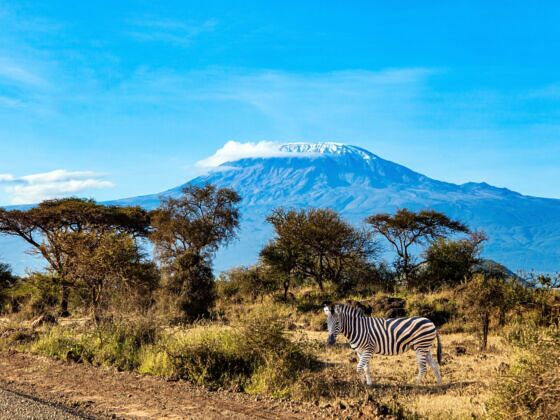
Hiking Mount Kilimanjaro? Read This Before You Start Planning.
But that’s not surprising, as Mount Kilimanjaro is usually considered the easiest of the Seven Summits. That’s primarily because it doesn’t require any technical skills or mountaineering knowledge, though you will find very steep sections, plus some rocky scrambles. Oh, and porters carry your gear. And there are covered huts to sleep in along the way. And the weather is fairly nice and warm (at least the beginning).
Of course, it wasn’t always that straightforward, and the first person to climb Mount Kilimanjaro (Hans Meyer) didn’t stand on the summit until 1889. It was his third attempt, so don’t feel bad if you don’t make it to the top on your first (though most people do).
If you’re thinking about planning a trip to hike Mount Kilimanjaro, here’s what to know before you begin your trip planning. And, yes, you may see elephants on the way up.
- Where is Mount Kilimanjaro?
- How tall is Mount Kilimanjaro?
- How long does it take to hike? What month is best?
- How much does it cost to hike Mount Kilimanjaro?
- How hard is it?
- How cold is Mount Kilimanjaro at the summit?
- Is it an active volcano?
- Other things to do in Kilimanjaro National Park
- Where to stay around Kilimanjaro National Park
Where is Mount Kilimanjaro?
Mount Kilimanjaro is famous for being the highest mountain in Africa. It’s in northern Tanzania, near the border with Kenya and close to Mount Meru (the second-highest mountain in Africa). That puts it fairly close to Lake Victoria and the safari reserves and coffee plantations near Nairobi, making visiting Mount Kilimanjoaro an excellent finale to a larger trip through eastern Africa.
The actual Mount Kilimanjaro is in Kilimanjaro National Park, which covers 652 square miles of forests, desert, brush, and grasslands. You’ll want to fly into Kilimanjaro International Airport, from where you’ll head either to Moshi (55 minutes from the airport) or Arusha (just over an hour from the airport). Those are the two starting points for treks.
You can find flights to Kilimanjaro International Airport from cities like Addis Ababa, Ethiopia; Doha, Qatar; Dar Es Salaam, Tanzania; and even Amsterdam, in The Netherlands.
How tall is Mount Kilimanjaro?
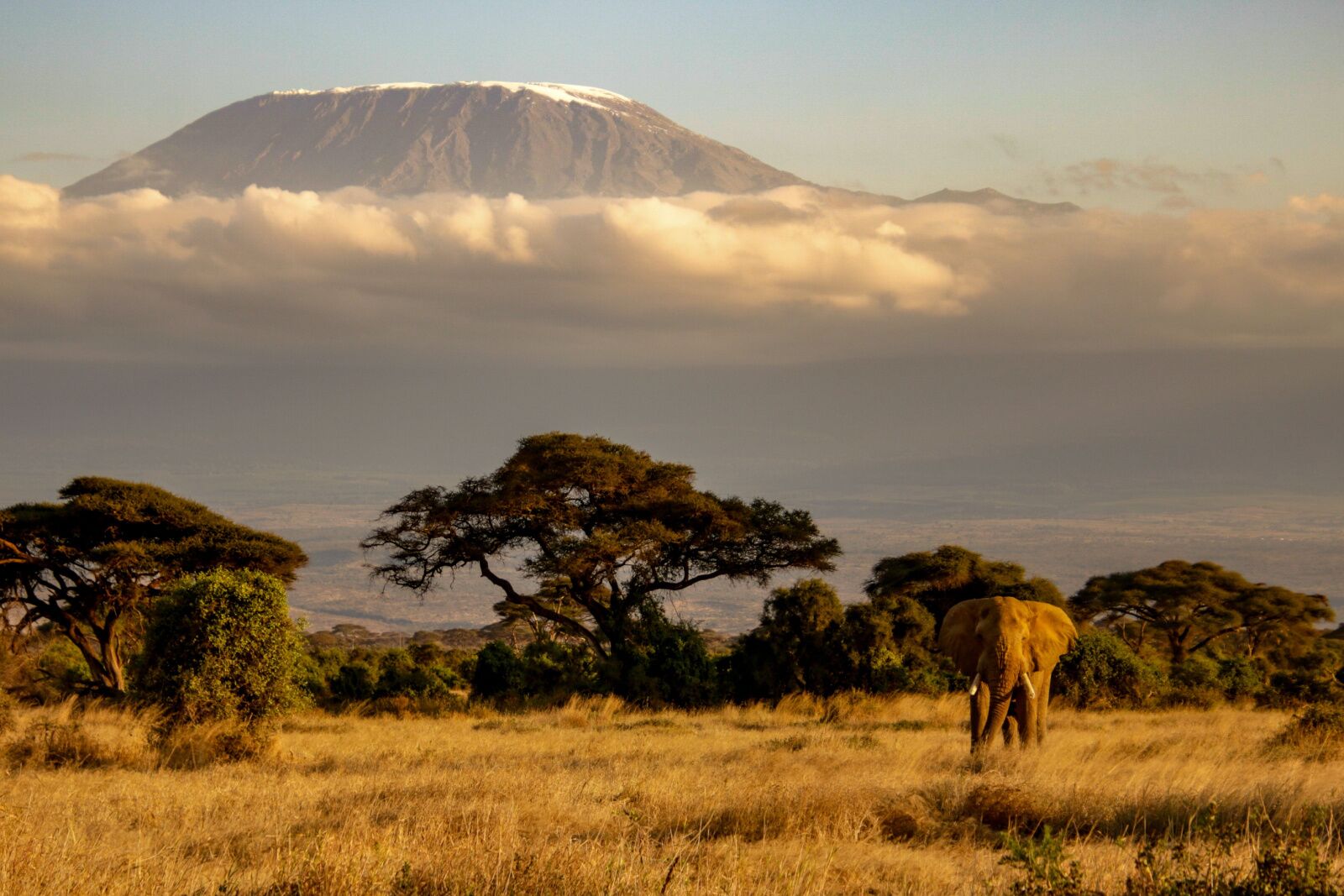
Photo: D. Currin/Shutterstock
Mount Kilimanjaro is about 19,340 feet (or 5,895 meters) above sea level. The mountain actually has three peaks: Kibo is the highest and home to the main summit, followed by Mawenzi at 16,890 feet above sea level and Shira at 13,00 feet above sea level. That puts it nowhere near the tallest mountains on Earth.
However, if you go by prominence — how much taller the mountain is than the terrain around it — it’s the fourth most prominent in the world, and more prominent than Mount Everest (because the base of Everest is already 17,598 feet above sea level). You gain “only” about 11,500 feet of elevation to climb Everest, but you’ll gain about 13,000 feet of elevation while climbing Mount Kilimanjaro.
How long does it take to climb Mount Kilimanjaro? When should you go?
How long it takes to climb Kilimanjaro depends on a few factors, including which route you take, your speed, and what type of weather or terrain conditions you encounter along the way. On average, most climbers take between 6 to 8 days to complete the ascent and descent.
Here are the approximate durations for each of the popular routes:
- The Marangu Route (also called the Coca-Cola Route) is usually the shortest, covering 43.5 miles and typically taking 5-6 days.
- The Shira Route starts from a higher elevation and usually takes 6 days to cover the 36-mile route.
- The Machame Route (Whiskey Route) is one of the most popular, and you’ll find itineraries offering 6- and 7-day trips to cover the 40-mile route.
- The Lemosho Route is 41.5 miles, with most climbers taking 7 to 8 days to complete the trek.
- The Rongai Route starts from the northeastern side of the mountain and is 46 miles, usually taking around 6 or 7 days. Spoiler: it’s also called the easy route.
- The Northern Circuit Route is the longest route at 54.6 miles and usually takes 9 days.
You’ll also need to factor in your travel time, as it takes a full week or more to climb Mount Kilimanjaro. So you’ll need to count on a few buffer days on either end to adjust to the time zone, travel within the country, and get any last-minutes supplies you may need before you lace up your hiking boots.
The climbing season is year-round, but the best time of year to climb Mount Kilimanjaro is usually between December and March. That’s the summer season in Tanzania, so it’s warmer with lower chances of rain. The rainy season runs from late May to mid-June, so it’s generally best to avoid those months. The end of June through early October is colder but also dry, but by November, the rains are back. Of course, rainy season treks usually cost less, so if you don’t mind some moisture and potentially obscured views, go for it. Just consider packing a rain jacket or two.
How much does it cost to climb Mount Kilimanjaro?

More luxurious trips include stays at private camps with dining tents and furniture (all carried by local porters, instead of you). Photo: Slepitssskaya/Shutterstock
How much it costs to climb Mount Kilimanjaro depends mostly on what level of luxury you’d like. You’re not allowed to climb it without a guide, but there’s a lot of range within that. The permit alone is $1,000, however, so don’t expect it to be cheap.
Monkey Adventures has a five-day package that starts at $1,350 and includes your guides, porters, transportations, hut fees, meals, and other basics, but you can opt for more luxurious trips, too. Luxurious trips with companies like Thompson Safaris include private (and extra-tall) tents with raised beds and actual mattresses, solar lighting, toilet tents, all meals, and lots of creature comforts to make your trek seem more like a walk. Of course, that’ll set you back more than $8,000, depending on your departure date.
If you go with a local operator, you can find a good, safe company in the $2,500-$3,000 range per person. Western operators not based in east Africa will probably charge more like $3,500+. Group-based operators like G Adventures list the cost to climb Mount Kilimanjaro at $2,200 for a basic 7-day trek up to $4,200 for a longer trek with more comfortable, private campsites.
How hard is it?

Photo: Timaldo/Shutterstock
Kili is considered the easiest of the Seven Summits, but that doesn’t mean it’s objectively easy. However, it’s the only one of the Seven Summits that doesn’t require much training or any type of real mountaineering knowledge. As long as you can hike for several days in a row, you can probably do it. The success rate for summiting Mount Kilimanjaro is roughly 70-80 percent.
Whether you’re likely to succeed seems based primarily on how much time you give yourself. The quicker people try to do it, the more likely they are to get fatigued or hurt and not make it to the top. So if you’re on the fence, choose the maximum number of days you can do on your chosen route. This also gives your body the maximum amount of time to acclimatize, making it easier to avoid the perils of altitude sickness. For some, altitude sickness is no more than a weak headache and sore muscles; for others, it can be life-threatening.
How hard it is to climb Mount Kilimanjaro also depends on which route you choose. An unofficial study found that the Lemosho route done in 8 days had a 90 percent success rate, and the 9-day northern circuit had a 95 percent success rate, probably because hikers aren’t feeling rushed.
Remember, however, that you’re still doing a lot of elevation gain in just a few days. Even if you don’t train, you should be in reasonably decent shape and have some experience with long-distance day or overnight hikes. You also need to be prepared for extreme sun, snow, heavy wind and rain, and potentially cold and foggy conditions that can limit your field of vision. Always listen to your guide’s advice, even if you’re a very experienced hiker. Evacuations by helicopter can cost $6,000 or more.
How cold is it at the top of Mount Kilimanjaro?

Photo: mikluha_maklai/Shutterstock
It can be extremely cold at the top of Mount Kilimanjaro, often reaching below freezing. The highest point on Kibu that most people consider the summit is Uhuru Peak, and at 19,341 feet above sea level, it’s pretty cold. Add in thinner air, and it always feels wintery. Look at photos of people at the summit, and you’ll see they usually have insulated down jackets, gloves, face coverings, and beanies.
As a very loose rule, expect the summit to be between 20 degrees Fahrenheit and -20 degrees Fahrenheit ( -6 to -28 C). Storms and whipping wind can make it feel much colder, so just prepare for it to be extremely cold, and be happily surprised if it’s not.
For your summit attempt, keep two things in mind:
- You don’t spend much time at the summit — maybe 30 minutes or so to take photos. Then, you head back down. While the night before your summit attempt will likely still be quite cold, you won’t be in the below-freezing, crazy cold summit temperatures for very long.
- However: most tour operators start the summit day very early, often around 1 AM. That gives you plenty of time to make the attempt, reach the top, and hike back down to your campsite for that evening. But at 1 AM, you’ll likely be very tired, and climbing out of a warm sleeping bag to hike in the cold isn’t all that pleasant. Err on the side of dressing too warmly on summit day.
Is Mount Kilimanjaro an active volcano?
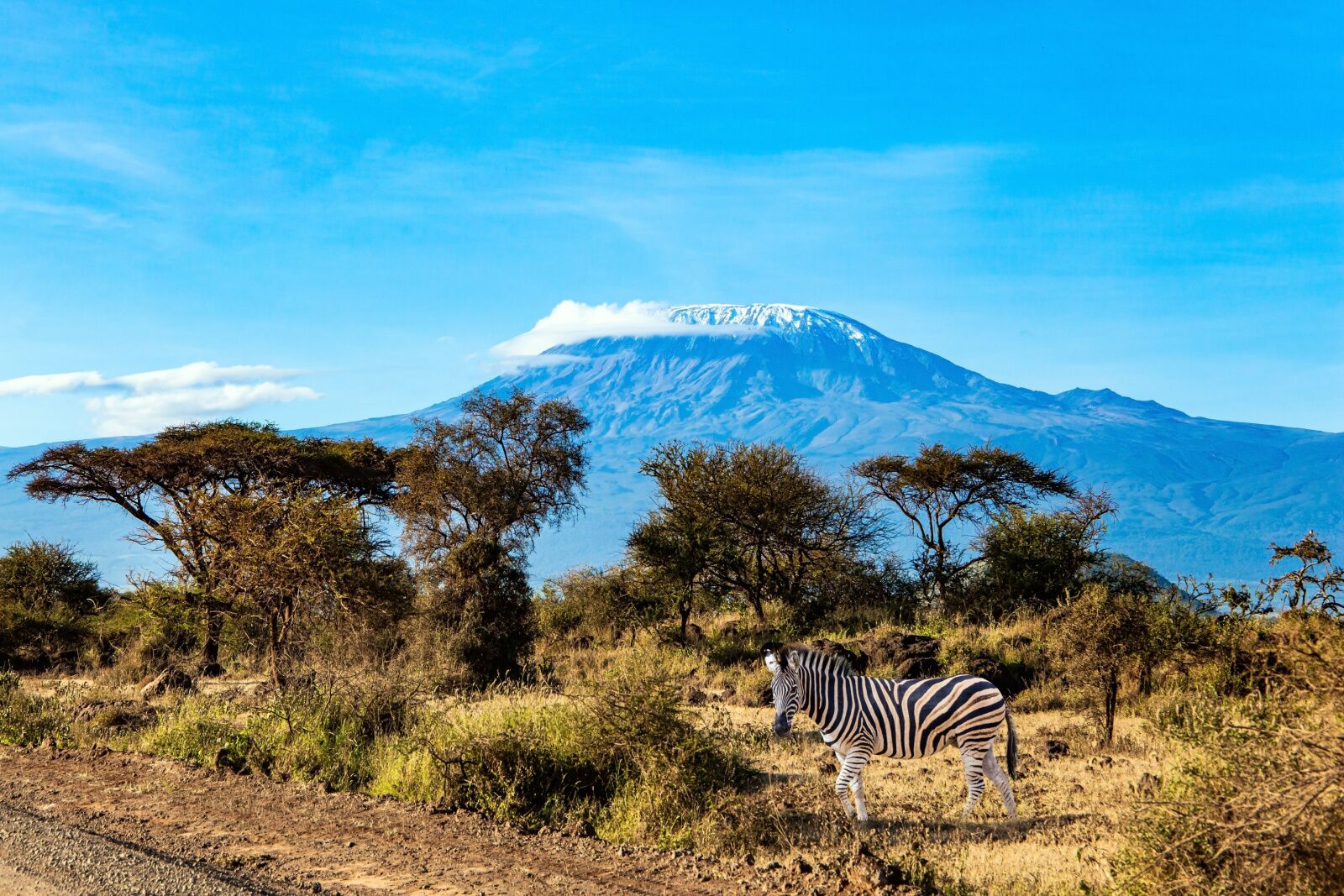
The mountain that looks like a volcano is, indeed, a volcano. Photo: kavram/Shutterstock
Mount Kilimanjaro is technically a dormant stratovolcano, meaning it’s currently inactive, but has the potential to erupt in the future. That’s a lot safer than an active volcano, but there’s always a chance it could erupt again. However, there are almost always signs that a volcano is about to erupt, so in general, volcanic activity isn’t something you need to worry about while hiking Mount Kilimanjaro.
The last major eruption of Mount Kilimanjaro occurred over 360,000 years ago, and since then, there have been no recorded eruptions. There are a few fumaroles on the mountain, though, especially near the Kibu crater on the summit. Because they emit gas and steam, researchers know there’s still some level of geothermal activity beneath the mountain. Several scientific organizations are constantly monitoring the mountain, including the Smithsonian Institute’s Global Volcanism Program.
While the idea of hiking on a volcano may seem scary, it’s more common than you’d think. Mount Fuji in Japan, Mount St. Helens in Washington State, and Cotopaxi in Ecuador are all volcanoes, and people hike them every day. In fact, all three of those are still active, which makes Kili a lot safer.
Other things to do in Kilimanjaro National Park
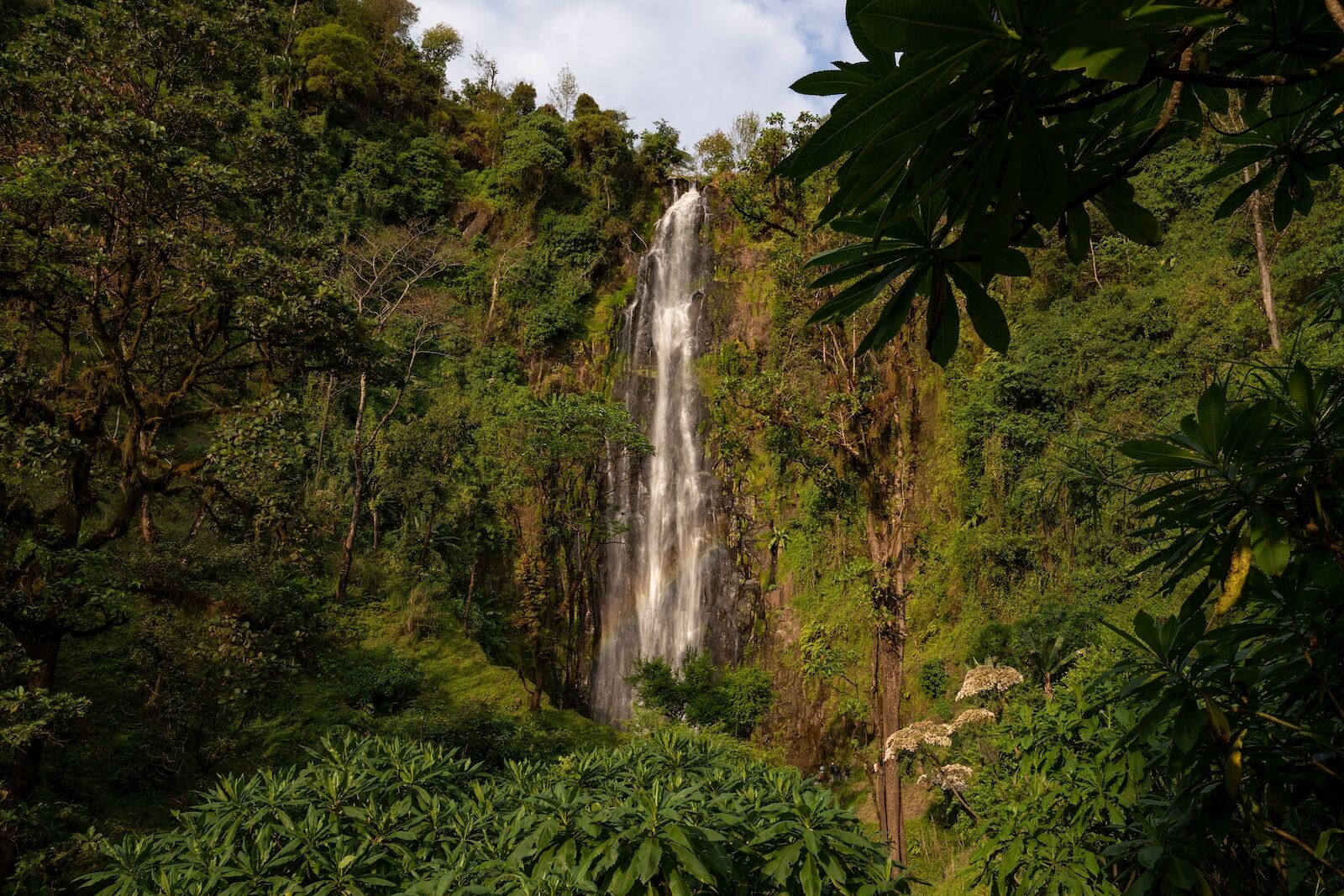
Photo: Moshe EINHORN/Shutterstock
Kilimanjaro National Park offers other things to do besides multi-day summit attempts.
-
- Safaris: Though most photos of Kilimanjaro are from the summit, the lower parts of the trail are lush and jungle-filled. The mix of landscapes provides an ideal home for wildlife like elephants, buffaloes, leopards, zebras, and various species of primates. The northern part of the park, around the lower slopes, is particularly known for its wildlife.
Many guided day hikes around the park have a focus on spotting wildlife, and the nearby town of Arusha is known as being the starting point for single- and multi-day wildlife trips. You can book one in advance from an operator or take your pick from vendors selling guiding services and trips on the side of the road. - Day Hikes: Kilimanjaro National Park offers several shorter trails, and you can always do the first segment of any of the summit treks as a one-day hike. Popular day hikes include the Materuni Waterfall (3 miles, 800-foot gain), the Marunga Gate (10.5 miles, 2,960-foot gain), and the Machame Gate to Machame Hut (12.8 miles, 4,000-foot gain). Guides are required to do any hiking in the park; fortunately, just about every hotel, coffee shop, and tourist center can recommend one.
- Coffee Plantation Tours: Tanzania is known for its coffee production, and the slopes of Mount Kilimanjaro are home to some of the country’s best beans. Consider taking a guided tour that combines a trip to a park waterfall with a coffee plantation visit, or reach out to a business like Kilimanjaro Plantation to arrange a hike after your tasting (or vice-versa). Also nearby is Machare Coffee, which runs a boutique hotel on the farm not far from Kilimanjaro National Park
- Safaris: Though most photos of Kilimanjaro are from the summit, the lower parts of the trail are lush and jungle-filled. The mix of landscapes provides an ideal home for wildlife like elephants, buffaloes, leopards, zebras, and various species of primates. The northern part of the park, around the lower slopes, is particularly known for its wildlife.
Where to stay in Tanzania
When you’re trekking on the mountain, you’ll stay either in huts (along the Marangu route) or in designated campgrounds. And some higher-end guiding companies have their own campground sections with nicer tents and dining areas, sort of like an Everest base camp. But you’ll need somewhere to stay before and after your trek. Even if you’re a budget traveler, you may find that it’s worth it to spring for a higher-end hotel to ensure a good nights sleep before you begin or have a comfortable place to recover after you finish the trek.
Note that some tour prices include lodging the night before you begin, so make sure yours doesn’t before you book a room.
We hope you love the spaces and stays we recommend! Just so you know, Matador may collect a small commission from the links on this page if you decide to book a stay. Listed prices are accurate as of the time of publication.
Kaliwa Lodge, Moshi
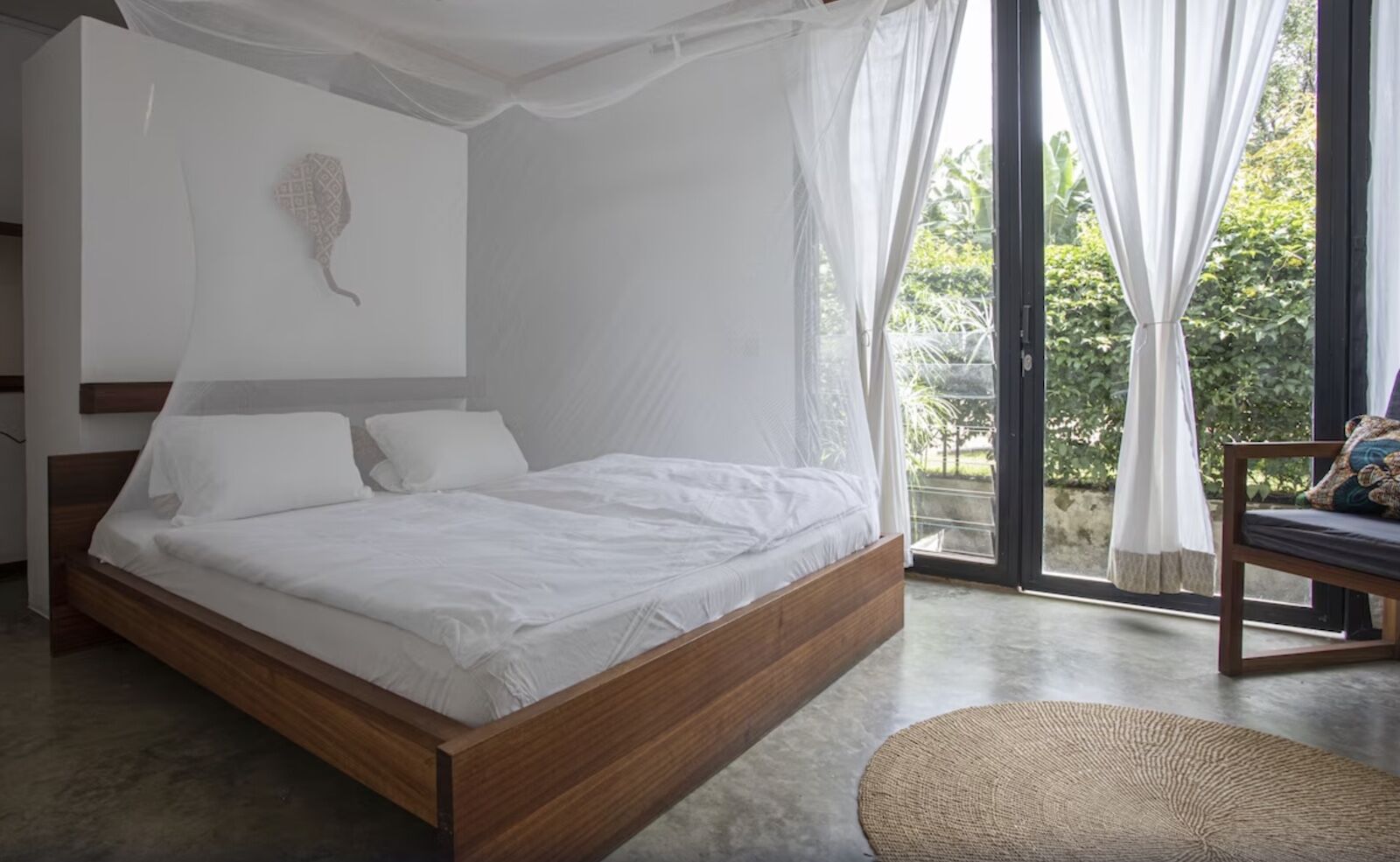
Photo: Expedia
Kaliwa Lodge is one of the nicer hotels in Moshi. It’s a riverside property with big patios and an outdoor whiskey bar and restaurant with views of Mount Kilimanjaro. Most people staying there will probably also starting or ending a Kilimanjaro hike, so expect to do a lot of story swapping around the communal spaces. Rooms start around $189 per night.
The Manor at Ngorongoro, Arusha
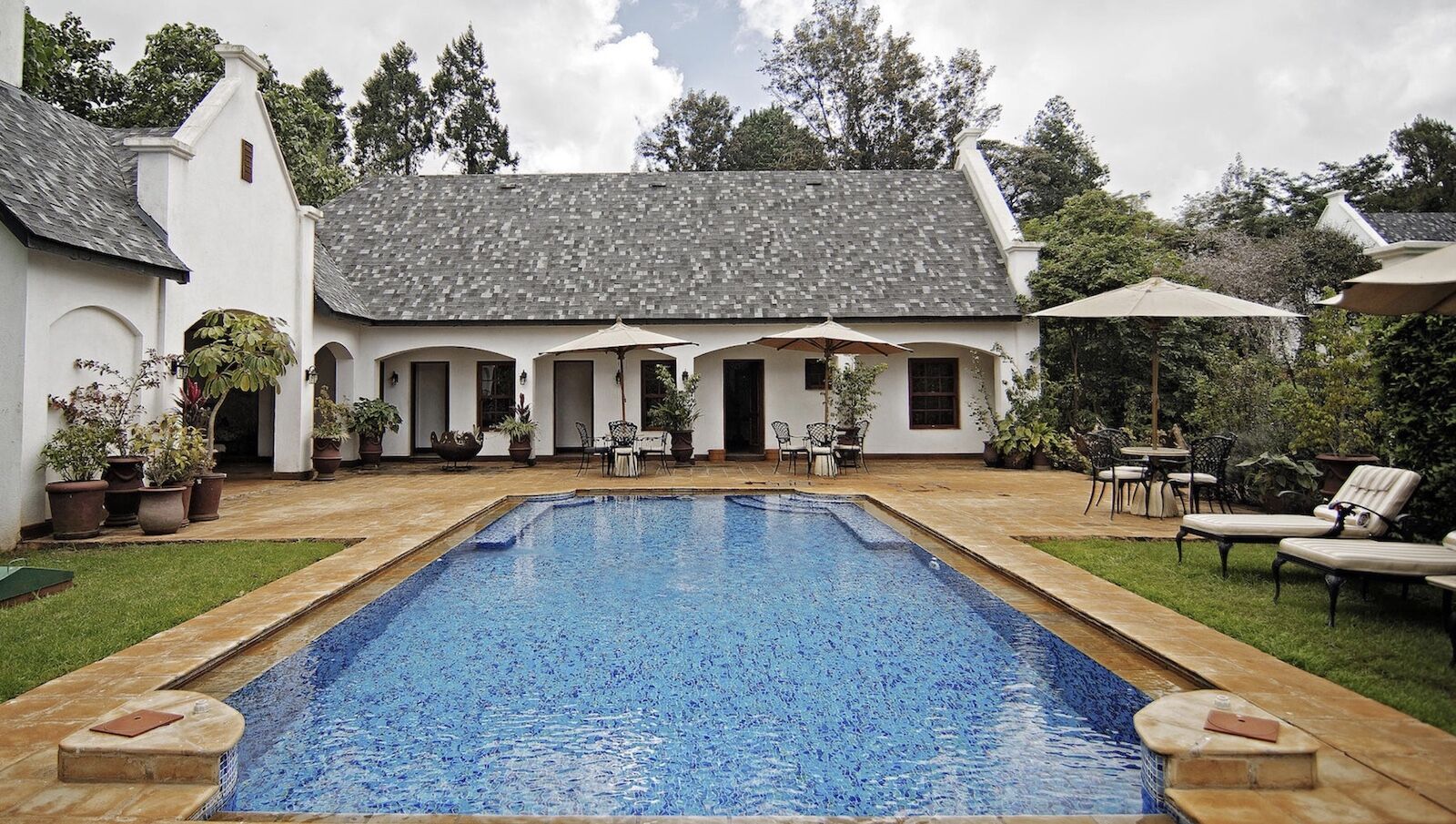
Photo: Expedia
The Manor at Ngorongoro is one of the prettiest hotels in Tanzania and, fortunately, it’s in Arusha. The historical home-turned-hotel sits on a coffee farm and rooms and suites are luxurious and large. It’s a great place to stay if you want to add extra activities on to your trip as the hotel can arrange safari drives, horseback riding, or evening sundowners (cocktails) outdoors in the garden. Rooms, admittedly, are steep, starting at over $1,000 a night.